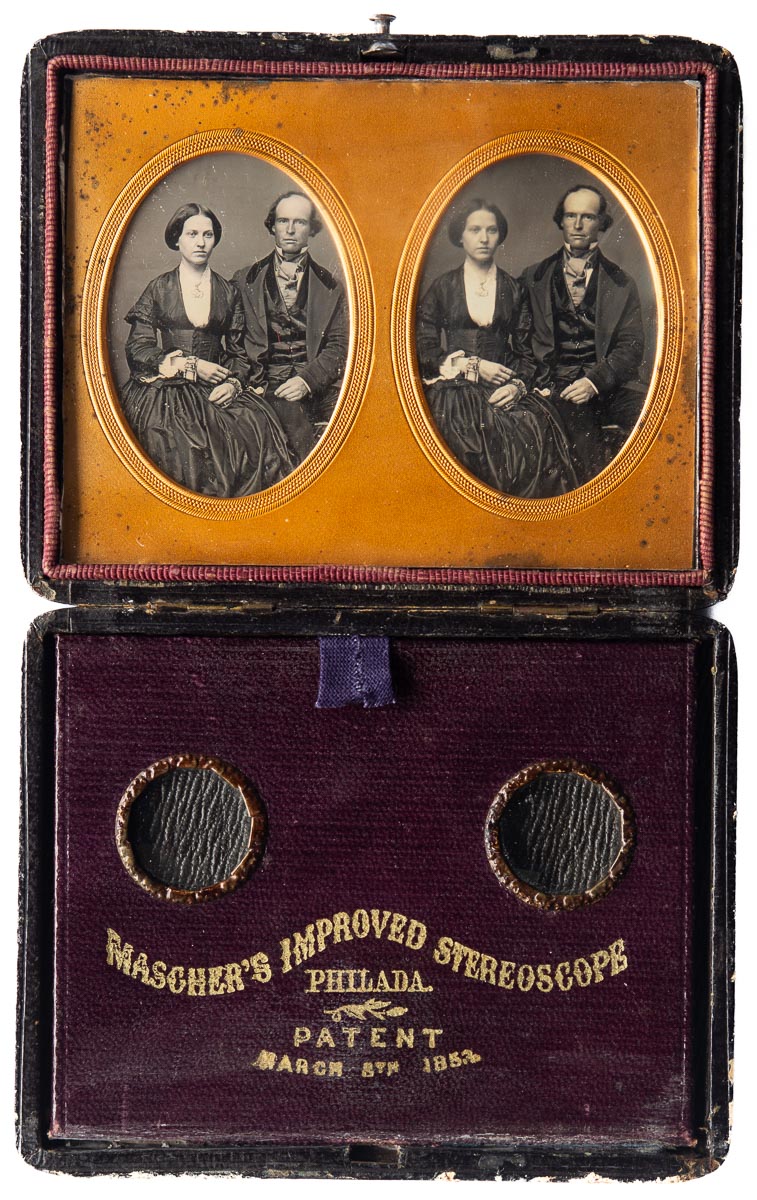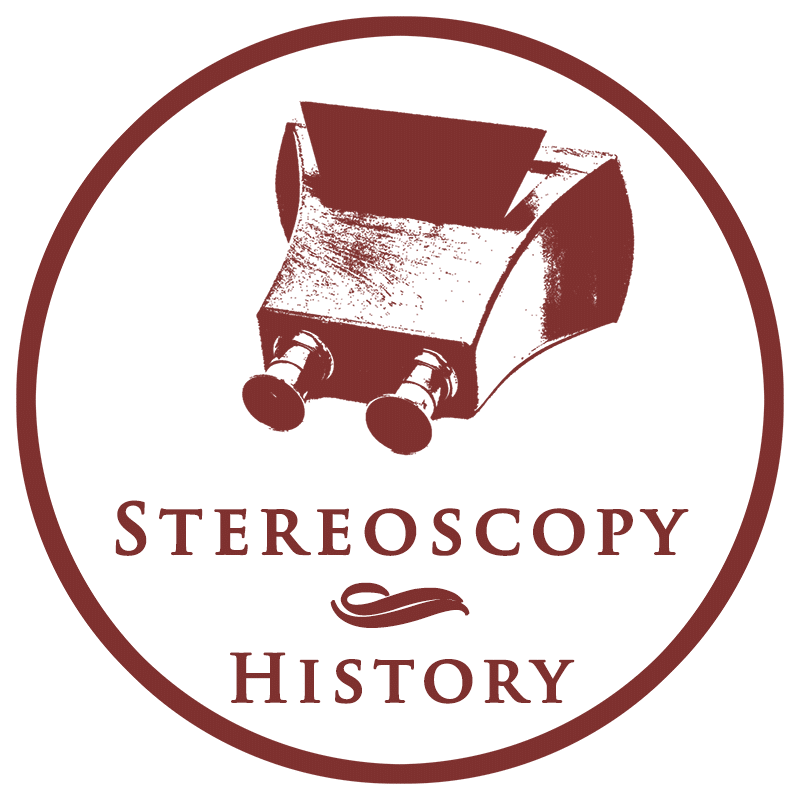
John Frederick Mascher was a German born clock and watchmaker in Philadelphia. He patented his stereoscopic viewing case on 8 March 1853, and this was the first American patent for a stereoscope1. Stereo images became popular from 1851, but viewing a stereo daguerreotype was challenging because of the reflections of the silver plate. Special viewing cases were introduced in Europe and the United States to improve the viewing experience.
Mascher aimed with his viewing case at the mass market2, and it was available in a variety of sizes and styles. He held a near-monopoly on the manufacturing of the cases and sold tens of thousands in a brief period, as daguerreotypes disappeared in the early 1860s. From that moment, the cases were made suitable for ambrotypes and tintypes, which were based on the collodion process.
The Mascher viewing case is a foldable viewer that is made of wood and covered by leather. The viewer consists of a plate on which the lens panel and the holder with the daguerreotype are placed. Both can’t be locked, so viewing the image is a bit cumbersome. It’s best to place the daguerreotype in your palm and hold the lens panel between your thumb and forefinger.
Specifications
| Manufacturer: | John Frederick Mascher |
| Year of introduction: | 1853 |
| Year of manufacture: | c. 1855 |
| Type: | Hand-held |
| Viewer: | Single-view |
| Serial number: | None |
| Stereoview support: | Daguerreotype |
| Stereoview format: | 8,1 x 10.8 cm |
| Lens focussing: | No |
| Inter-ocular adjustment: | No |
| Eyepiece blinders: | No |
| Dimensions (L x W x H): | 17 x 8.5 x 2 cm (folded) |
| Construction: | Wood and leather |
